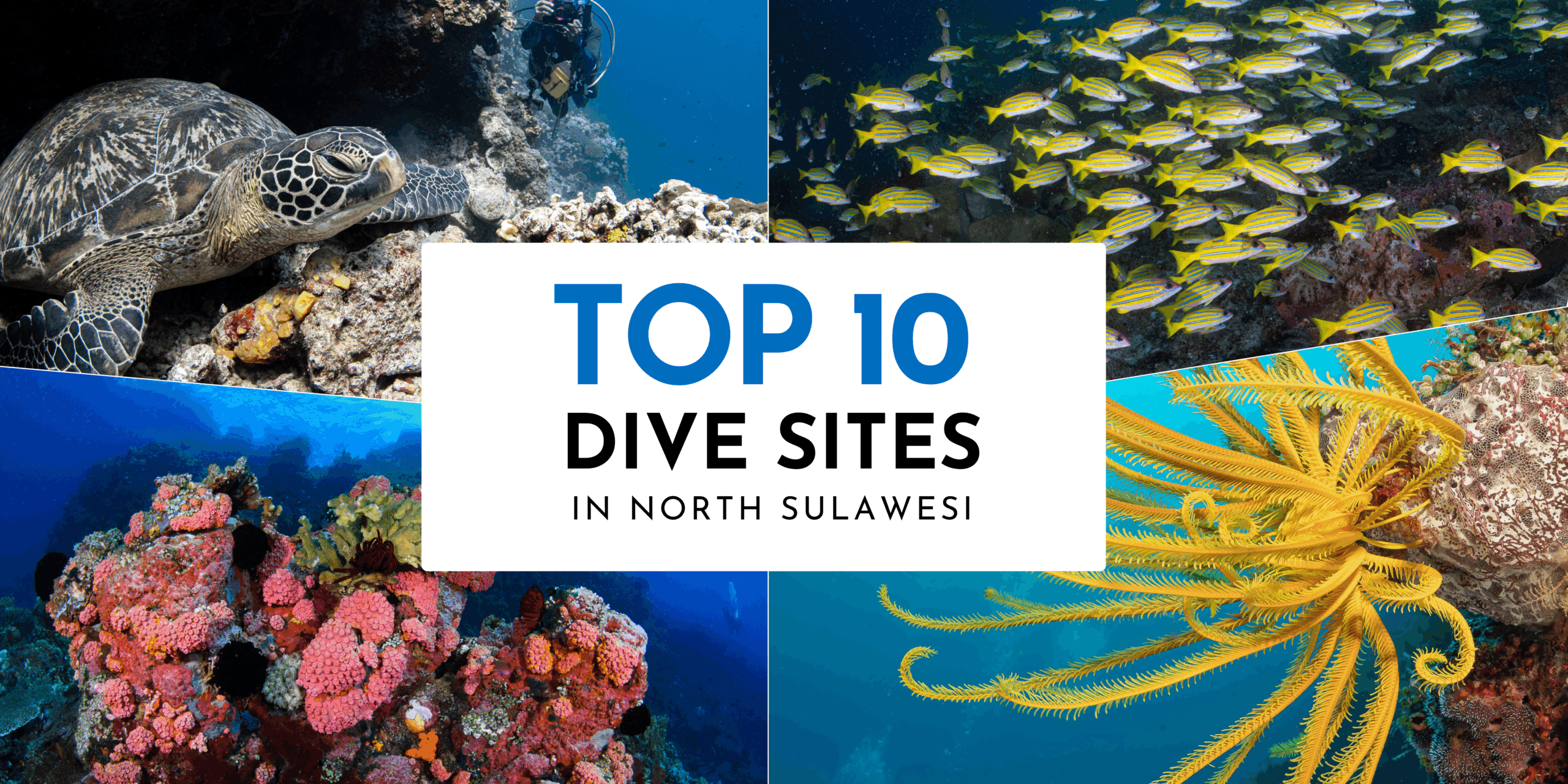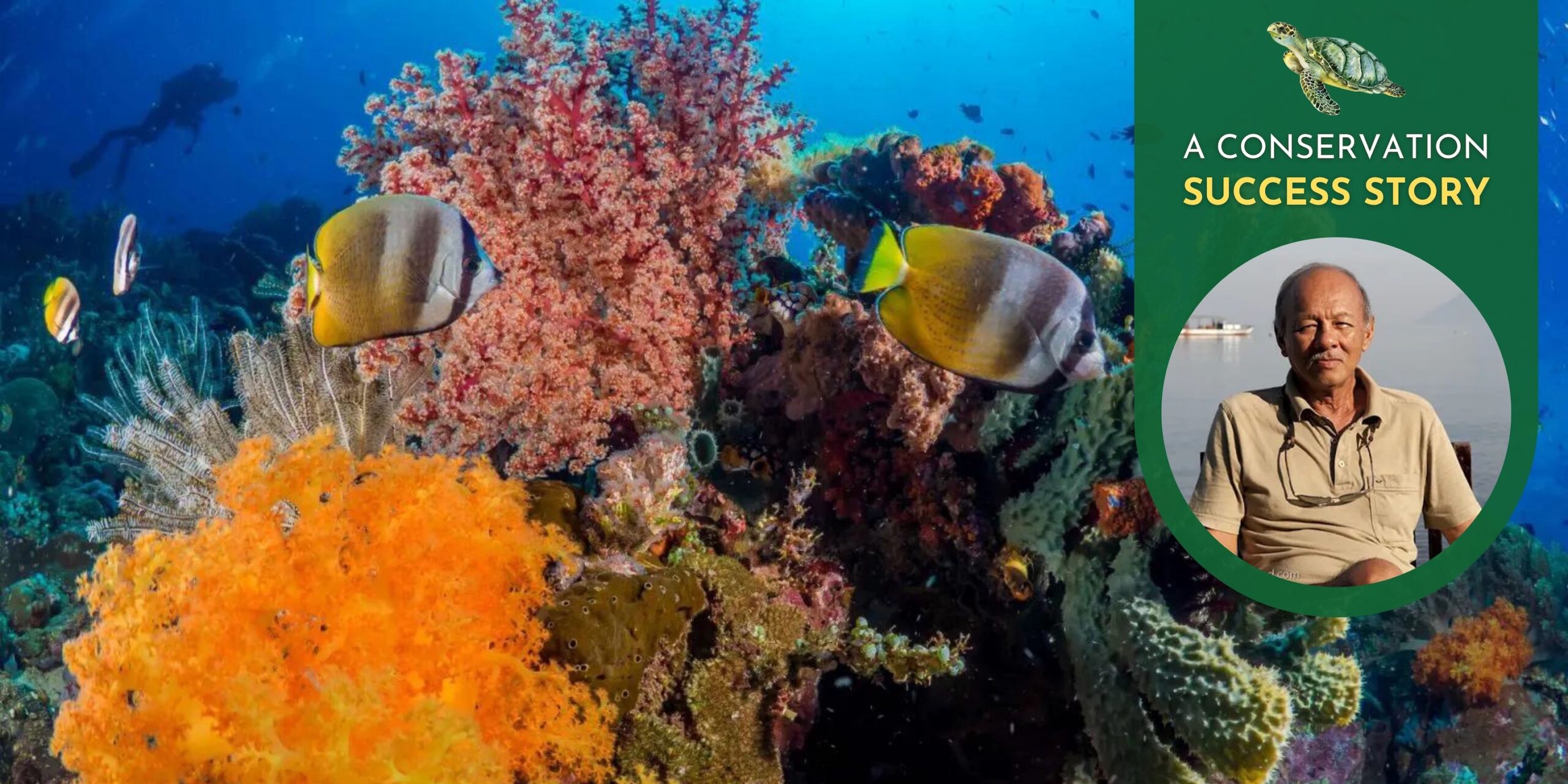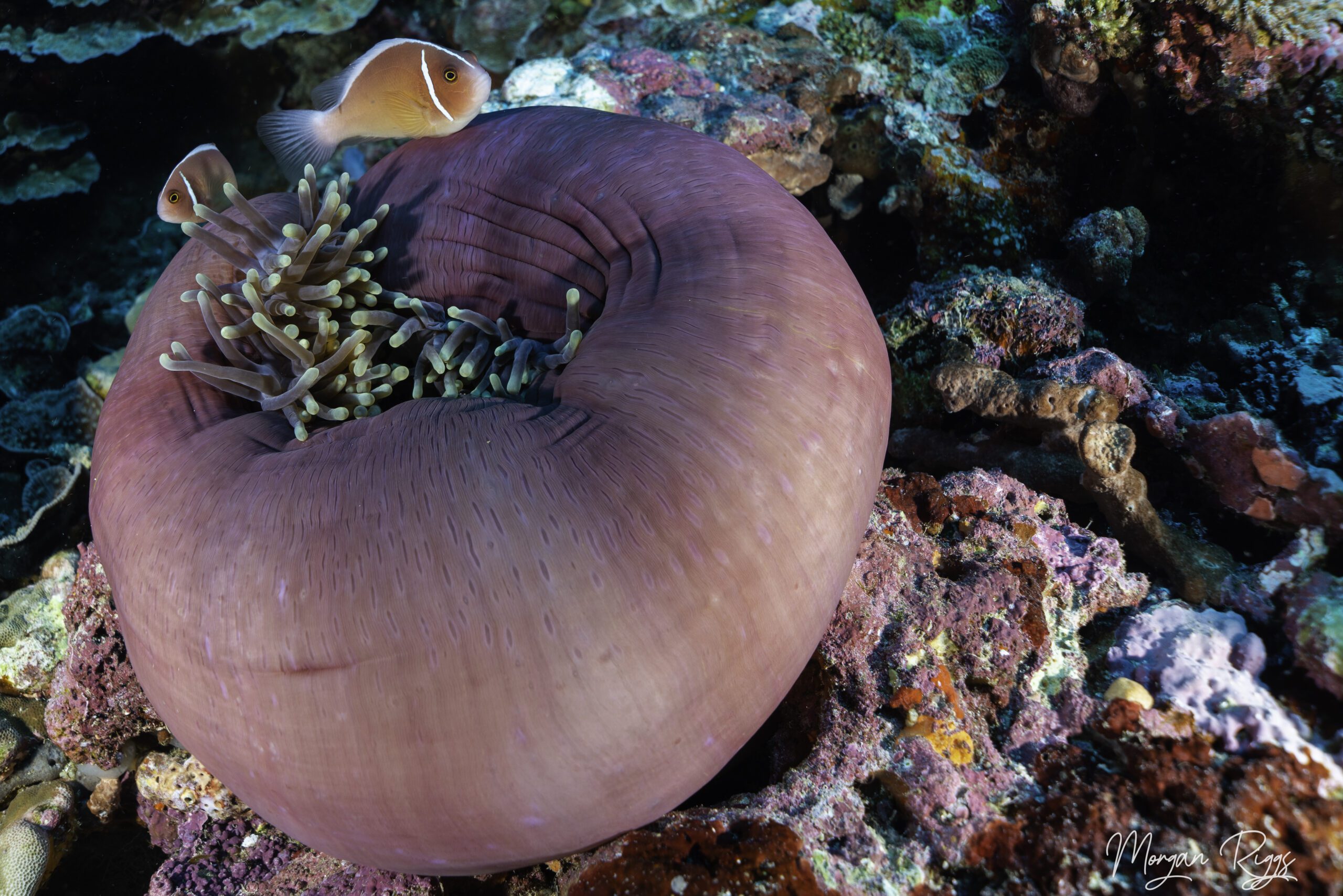
Anemone Eco-Systems: Hives of Activity in North Sulawesi
Anemones are not only beautiful to look at; they also offer protection from predators to numerous marine species. While sea anemones may look delicate, they actually take on the role of a fortress for many anemonefish species and crustaceans. To gain the protection of a sea anemone there is a price to pay which varies from species to species.
How much do you know about the eco-systems which exist within a single anemone? Here we take a look at some of the species we find in anemones in North Sulawesi – often numerous species all working together inside one anemone to keep it healthy. Anemones really are hives of activity!
Anemonefish
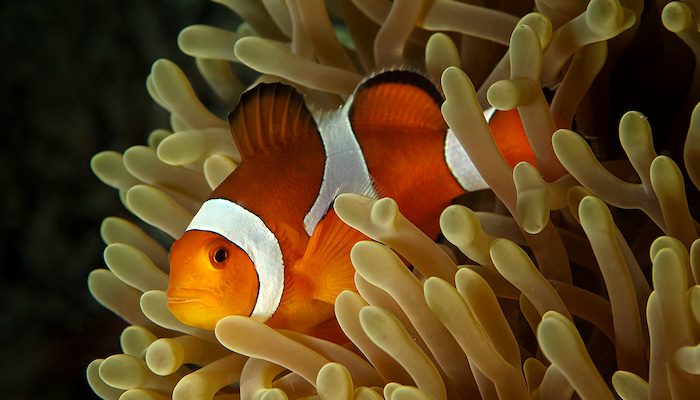
The symbiotic relationship between anemonefish and anemones is one of the most famous in the animal kingdom
Clownfish (Anemonefish) live in symbiosis with their host anemones and this is one of the most famous symbiotic relationships in the marine world. Anemone’s have stinging tentacles which gives them protection from predators. The little clownfish however is immune to the stingers and is able to live inside the anemone thereby gaining the benefit of it’s protection.
In return for protection the clownfish keeps the anemone clean by eating the algae and let over food scraps found within the anemone. A recent study also suggests that the clownfish also helps to keep the anemone aerated by constantly moving through the tentacles.
Porcelain / Anemone crabs
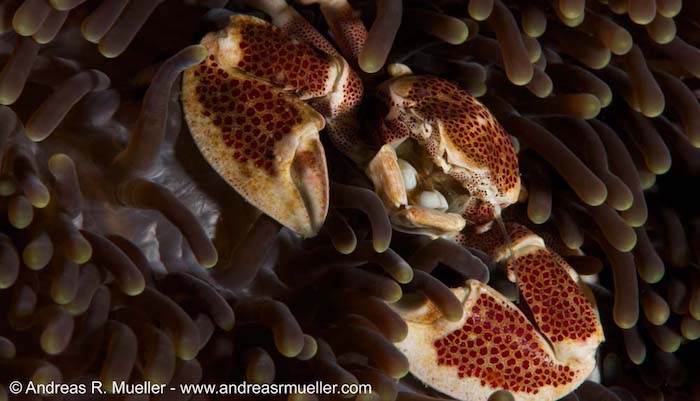
In North Sulawesi we find porcelain crabs (neopetrolisthes maculatus) among the tentacles of carpet anemones.
When diving Bangka Island and in Bunaken we find numerous porcelain crabs on almost every dive – check each anemone you pass to see if there are any residents! The spotted porcelain / anemone crabs Neopetrolisthes maculata and N. ohshimai typically live in pairs that associate with a wide range of anemones, including the carpet anemone, Merten’s anemone, the Ritteri anemone, the long-tentacle anemone and the bubble-tip anemone.
Both species come into full contact with their host’s tentacles and can even walk across carpet anemones. The anemone provides these small, vulnerable crabs with protection from predators and in return (similar to the clown fish) the crabs will clean the anemone, keeping its surface in good health.
Anemone shrimps
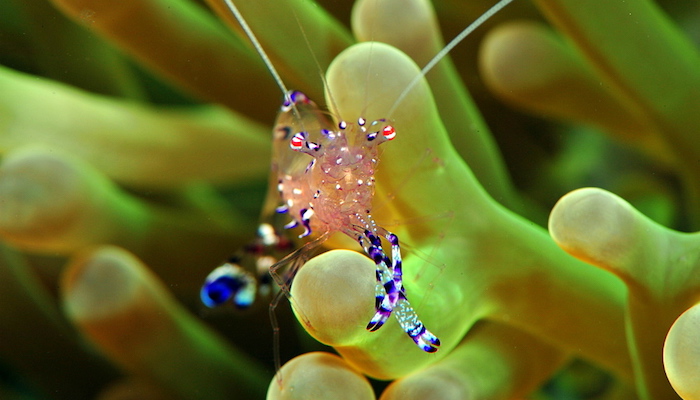
Anemone shrimp (Periclimenes genus) are able to make contact with the anemone’s stinging tentacles
True anemone shrimps (from the genus Periclimenes) can make full contact with the anemone’s tentacles. Some of these shrimp species’ can only make contact with one specific type of anemone, others are able to make contact with several species. These shrimps are also cleaners that will nip and pick tiny parasites from the anemone, its tentacles and its underside.
There are other types of anemone shrimp which can not make contact with the anemone and instead they hover just over the tentacles and will clean the area surrounding the sea anemone. Both types of anemone shrimp are afforded protection from predators and we regularly see them when scuba diving Bunaken Marine Park and around Bangka Island.
Boxer crabs (AKA Pom Pom Crab)
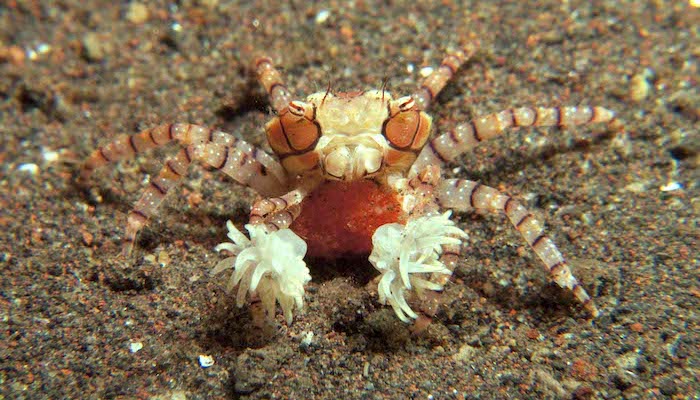
Boxer crabs “wear” anemones like boxing gloves to fend of predators
Boxer crabs have a symbiotic relationship with anemones which is mutualistic (meaning that both parties benefit). The boxer crab holds the anemones in its claws and uses them as “boxing gloves”. Not only do they pack a punch but the tentacles will also sting predators if they attempt to attack. In return, the anemone feeds off scraps of food from the crabs pickings. Boxer crabs are a very shy species so a sighting of this crustacean is a special find!
“Sexy Shrimps” (Thor amboinensis)
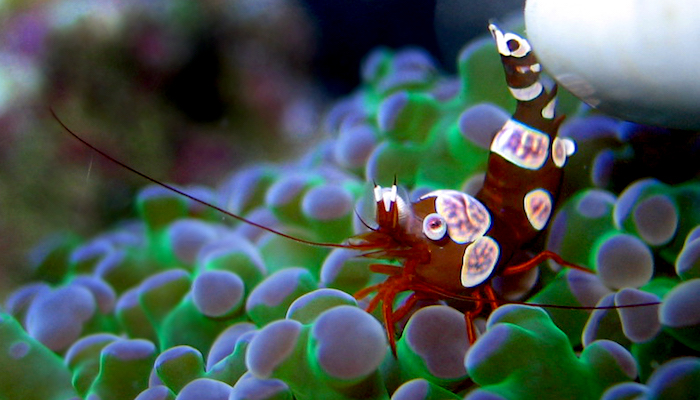
Sexy shrimp and anemone
Sexy shrimps take their name from their constant bobbing motion and they live ion symbiosis with a variety of anemone species. These tiny shrimp are usually spotted underneath the anemone, around the base of the anemone or within very close proximity.
As with other small shrimps, such as Periclimenes, the sexy shrimp gains protection from the hard-to-approach anemone and also appears to perform a cleaning service in return, helping keep the anemone free of detritus. It has been widely reported that the shrimp will feed on the anemone’s mucus and even its tentacle tips, though this seems to be a non-issue for the host, which can cope with the level of grazing.
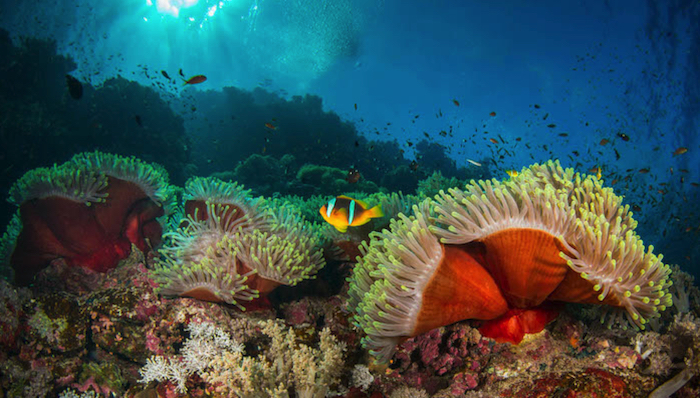
Anemones can be found at almost all of our North Sulawesi dive sites
How many of these species have you spotted on or around an anemone before? Many of them also make incredible macro photography subjects and the anemones make beautiful backgrounds.
Our Murex Dive Guides are trained by our in-house marine biologist and understand the symbiotic relationships which exist within anemones – this makes them incredible spotters. Are you planning your next Sulawesi diving holiday? Next time you dive pay close attention to the anemones – you may be surprised by what you find!
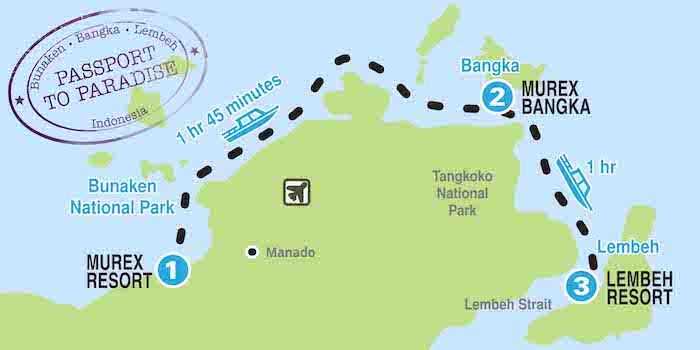
Join us for a Passport to Paradise and dive or snorkel 3 distinct locations in North Sulawesi
Why limit yourself to one diving area in North Sulawesi when you can dive three in one phenomenal trip? Bunaken -> Bangka -> Lembeh: Dive the staggering coral walls of the Bunaken Marine Park, explore Bangka island’s kaleidoscopic reefs and discover the World’s best muck diving in the Lembeh Strait. Boat diving transfers from resort to resort mean no wasted travel days – just dive your way around some of Indonesia’s richest dive sites.
To make a booking or for more information contact us on: reservations@murexresorts.com. We look forward to diving North Sulawesi with you soon!



